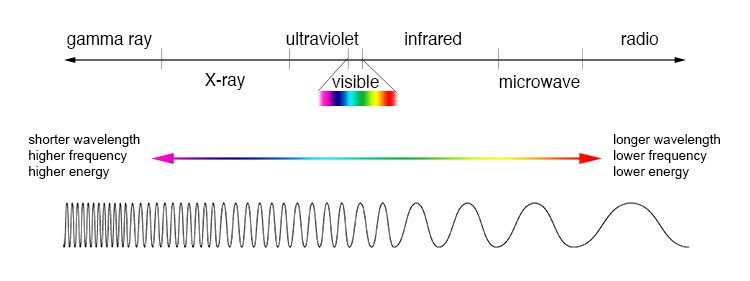Inspired by yesterday's post on Mars' blue sunset, I decided to bring this out today:
(Image by @ruth-girl)
The world is a palette of endless colors and shades. Red, scarlet, crimson, ruby, blue, aquamarine, azure and so on... But do we all see the same colors regardless their name?
It's all an illusion!

Yes, my friends. We 've been lied to all this time. The hot blondie you were checking out the other day only looks blond to you. Those magnificent suede burgundy red heels you've been saving to buy for Christmas are not as red as you think. And no, my troll does not have purple hair, because all these are only images created in our brains!
Woman, are you high?
No, I 'm not. I don't do drugs and neither should you, the point is that colors do not exist beyond our brains. They are rather the abilty of our visual system to perceive them as such. Our eyes bear specific receptors called rods and cones that are responsible for the images we "think" we can see.
Let's take it from the very beginning
Light (photons) is a particle and a wave, meaning that it has a wavelength. Humans are able to perceive only certain wavelengths of the electromagnetic spectrum (there are so much we miss in the invisible world, thank God there is technology to make up for it). Objects have the ability to absorb and reflect light. Absorbing specific wavelengths and reflecting others is what gives those objects their distinguishing color.

(Image from: wikimedia.org)
Our eyes are equipped with receptors called rods and cones. Rods are the ones responsible for vision in low-light conditions (in other words scotopic vision). Cones are divided into three categories depending on the wavelengths they are most sensitive at: s-cones (for short-wavelength light, blue), m-cones (for medium-wavelength light, green) and l-cones (for long-wavelength light, red) [2]. Every color comes from the combination of those three. These receptors get excited from the light that reaches our eyes and then send the signal to our brain through a vast network of neurons. Our brain is then able to synthesize those signals and form a final decision on what color it can "see". When this equipment is damaged then there are people whose "color palettes" deviate from the norm.

(Image from:commons.wikimedia.org)
A study from the University of Rochester in 2006 showed that, despite the variability in nature (the number of cones is not the same for all of us) we get to perceive colors the same way. Color, though, has to do with a more general consensus based on what we decide to call yellow, red or blue. Our experiences and environment are responsible in defining a particular wavelength as pure yellow or pure green [5].
Another experiment performed on monkeys showed that color perception is related to our environment and visual stimuli we get, but our brains are not born with a default mechanism. We get to adjust our color perception according to our "equipment". This experiment has raised hopes in fixing certain malfunctions on human eyesight, rendering possible for people with problematic eyesight to gain access to a wider spectrum range.
One last fascinating fact is that another study has revealed how melanopsin in the ipRGC cells of the eye retina affect human's emotions and circadian rythm. A remnant of man's ancient brain, melanopsin, signals the brain to create specific emotions upon seeing certain wavelengths. For example, shorter wavelengths (blue) make us feel calm and relaxed, that's why a walk by the sea might help reduce stress. Longer wavelengths (red and orange) make us more alert and energetic (now the idiom "see red" makes more sense) [1] and [6].
If you want to learn more on the anatomy and function of the eye, you can follow this link from micro.magnet.fsu.edu
Here is a short video on how our eyes see colors
And because I like this song, I'll leave this here (since the title matches the image in the beginning "Πήρα Κόκκινα Γυαλιά" - "I Bought Some Red Glasses":
References
[1] livescience.com
[2] workwithcolor.com
[3] cis.rit.edu
[4] khanacademy.org
[5] sciencedaily.com
[6] ncbi.nlm.nih.gov

Thank you very much for being here! I appreciate your support. If you want to see more of my posts, check some of the links below:
- Diamonds And Rust - A Short Story Of Science Fiction
- Bizarre Natural Phenomena Vol.37 - Cold And Dirty "Lava" (Mud Volcanoes)
- Trolls Around The Solar System - Part 3, Mars
- A Christmas Present For Alice - A Short Story Of Fantasy
- Bizarre Natural Phenomena Vol.36 - Diamonds In The Sky (Diamond Dust And Optical Illusions)

Until my next post,
Steem on and keep smiling, people!



